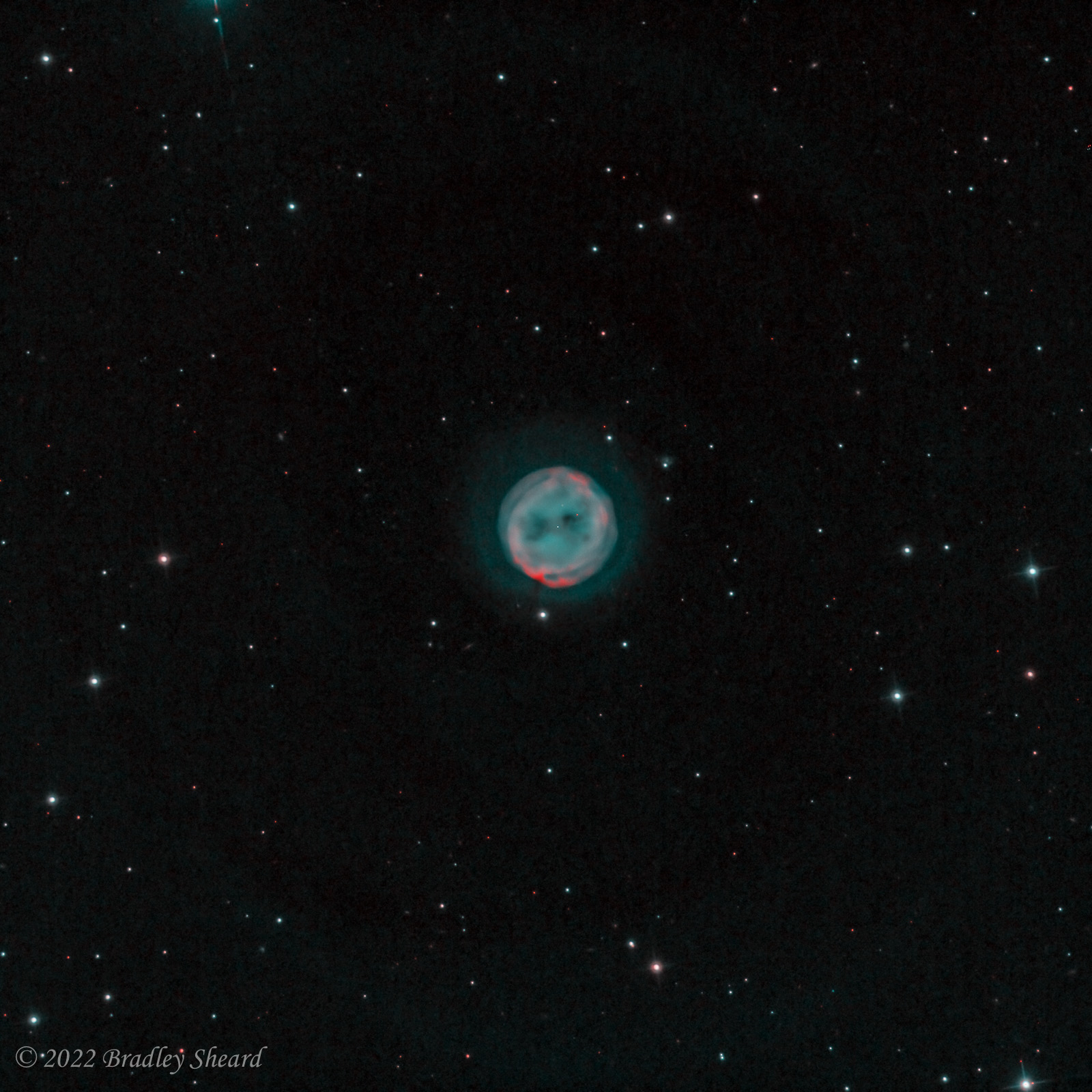M97 "Owl Nebula" in the Constellation Ursa Major | |||
| « Previous | Back to Astrophotography Gallery | » Next | |
| Back to Planetary Nebula Gallery | |||
M(essier)97, often called the "Owl Nebula," is a planetary nebula formed by the ejected outer envelope of a dying star. Stars that have an intial mass between 0.8 and 8 x the sun's will first evolve into red giants when their core hydrogen fuel is used up. The end of central hydrogen fusion causes the core to contract, while the star's outer envelope expands and cools, and the star becomes a red giant. As the core contracts it begins fusing helium into carbon and oxygen. Eventually core helum is exhausted, and stars of this mass range reach the end of the line; the core contracts while the star's outer layers cool and expand, and the star sheds these outer layers forming a "planetary nebula" (funny name, nothing to do with planets). The carbon-oxygen core that is left behind forms a white dwarf that slowly cools over billions of years, but produces no new energy. The white dwarf emits lots of ultraviolet photons, which excite and/or ionize the gas shell, causing the gas to emit visible light photons as the electrons recombine with ionized atoms and spontaneously cascade down to lower energy levels. The glowing gas shells do not last very long (in astronomical terms, at least), and after 10,000 - 100,000 years the shells dissipate into the interstellar medium, providing material for new star formation. |
